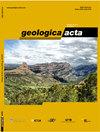伊朗南部Sanandaj-Sirjan变质带南部Gol-e-Gohar杂岩的地球化学和岩石成因;早古生代地壳伸展和岩浆活动的证据
IF 2
4区 地球科学
Q2 GEOLOGY
引用次数: 3
摘要
在东南部Sanandaj Sirjan变质带(伊朗克尔曼省)的Gol-e-Gohar变质杂岩中,有两种类型的变质玄武岩,包括层状变质熔岩流和年轻的变质辉长岩。原岩形成于古生代,并在三叠纪晚期的Cimmerian造山早期变质,温度为640–680℃,压力为~7–10.5kbar(角闪岩相)。这些岩石是含石榴石的角闪岩、不含石榴石的角闪岩和变质辉长岩。这些变质玄武岩的许多矿物学和化学方面都是相似的,尽管层状变质玄武岩显示出拉斑玄武岩,变辉长岩显示出碱性亲和力。全岩地球化学特征、Sr和Nd同位素数据等证据(143Nd/144Nd初始值=0.511913–0.512067;eNd550Ma=-0.31–2.68),球粒化稀土元素和多元素图的相对平坦模式,TiO2的富集(平均含量~2.16)和高Zr/Y比(3-8),表明所有的Gol-e-Gohar变质玄武岩都形成于拉斑玄武岩到碱性岩浆的伸展陆内裂谷带中。这些数据表明,paren岩浆可能是由次大陆岩石圈地幔中尖晶石二辉橄榄岩来源的低程度部分熔融引起的。这些证据证实了萨南达伊·瑟詹变质带南部在古生代存在伸展环境,当时萨南达伊·瑟詹变质区和下伏软流圈上升形成了大型伸展凹陷,并在此期间部分熔融。逐渐地,大陆碎屑沉积物和拉斑玄武岩熔岩流的厚序列在这些槽中堆积。该地区随后发生的岩浆事件以碱性辉长岩侵入体侵位为特征。在Cimmerian造山运动早期,这些沉积火成岩组合发生变质,形成了Gol-e-Gohar变质玄武岩。本文章由计算机程序翻译,如有差异,请以英文原文为准。
Geochemistry and Petrogenesis of metabasites from the Gol-e-Gohar Complex in southern Sanandaj-Sirjan metamorphic zone, South of Iran; Evidences for crustal extension and magmatism at early Palaeozoic
In Gol-e-Gohar metamorphic Complex from south-eastern Sanandaj-Sirjan metamorphic zone (Kerman province, Iran), there are two types of metabasites contain layered metamorphosed lava flows and the younger meta-gabbros. The protoliths formed in the Paleozoic era and were metamorphosed during the early Cimmerian orogenic phase in the late Triassic, under temperatures of 640–680oC and pressures of ~7–10.5kbar (amphibolite facies). These rocks are garnet-bearing amphibolites, garnet free amphibolites and metamorphosed gabbros. Many mineralogical and chemical aspects of these metabasites are similar, although the layered metabasites show tholeiitic and the meta-gabbros depict alkaline affinities. Evidences such as whole rock geochemical characteristics, Sr and Nd isotopic data, (143Nd/144Ndinitial=0.511913–0.512067; eNd550Ma=-0.31–2.68), relatively flat patterns of chondritenormalized Rare Earth Elements and multi-elemental diagrams, the enrichment in TiO2 (average content ~2.16) and high Zr/Y ratios (3–8), indicate that all of Gol-e-Gohar metabasites are formed in an extentional intracontinental rift zone from tholeiitic to alkaline magmas. The data suggest that the paren magmas could derived by low degrees of partial melting of spinel-lherzolite sources in subcontinental lithospheric mantle. These evidences confirm the existence of extentional environments in southern part of the Sanandaj-Sirjan metamorphic zone in the Paleozoic era, when large extensional depressions developed in the Sanandaj-Sirjan metamorphic zone and underlying asthenosphere ascent and partially melted during this time. Gradually, thick sequences of continental detritic sediments and tholeiitic lava flows accumulated in these troughs. Subsequent magmatic event in the area characterizes by emplacement of alkaline gabbro intrusions. At the early Cimmerian orogeny, these sedimentaryigneous rocks associations metamorphosed and the Gol-e Gohar metabasites formed.
求助全文
通过发布文献求助,成功后即可免费获取论文全文。
去求助
来源期刊

Geologica Acta
地学-地质学
CiteScore
2.50
自引率
6.70%
发文量
13
审稿时长
>12 weeks
期刊介绍:
- Relevant conceptual developments in any area of the Earth Sciences.
- Studies presenting regional synthesis.
- Thematic issues or monographic volumes presenting the results from one or more research groups.
- Short papers reflecting interesting results or works in progress.
- Contributions and results from Research Projects, Workshops, Symposiums, Congresses and any relevant scientific activity related to Earth Sciences.
- Geologica Acta aims to stimulate rapid diffusion of results and efficient exchange of ideas between the widespread communities of Earth Science researchers (with special emphasis on Latinamerica, the Caribbean, Europe, the Mediterranean
 求助内容:
求助内容: 应助结果提醒方式:
应助结果提醒方式:


